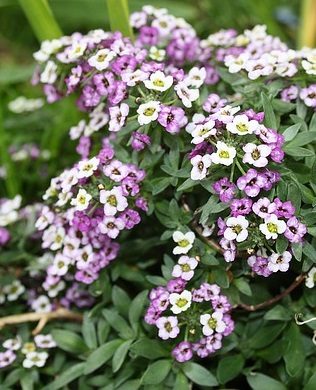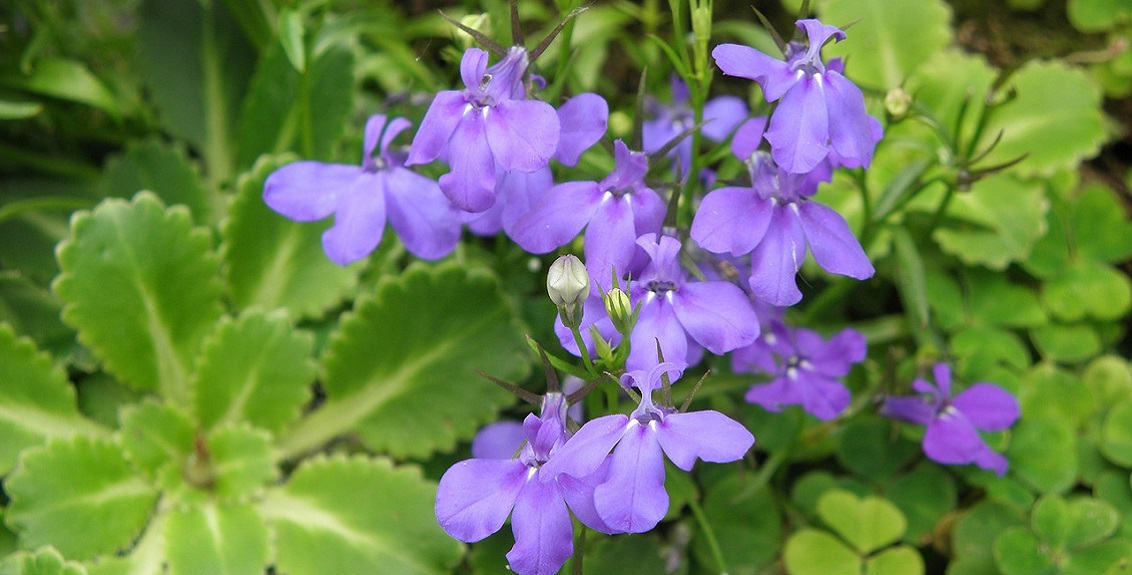There is a huge range of annual bedding plants you can grow for height, scent and colour, from cornflowers and sweet peas to Rudbeckia and zinnias. Nearly all summer bedding plants can be raised from seed although there is often a lot of work involved, from germination to pricking out tiny seedlings. If you don’t have the time or space for raising fiddly seedlings you could buy bedding plug plants to quickly get your garden started! Today we have two of our all time favourites for you!
Alyssum
Few annual plants can match the heat and drought hardiness of sweet alyssum. Sweet alyssum flowers are named for their fragrance and are members of the mustard family. While not frost tolerant, sweet alyssum plants will self sow and can provide you with year after year of bright colour in milder climates. This classic summer bedding plant blooms for months on end. Brilliant white flowers cover the low-growing, mound-shaped plants from June to September and brighten up the dullest of days. Perfect as edging, it makes an excellent partner for lobelia.
When planting alyssum seeds, it is crucial to keep the seeds moist during the germination process, as dry seeds with die quickly. Plant alyssum seeds in full sun.
- You can plant sweet alyssum flowers from seed straight into the garden in mild climates.
- Choose a location that has full sun, although sweet alyssum plants can tolerate partial shade as well.
- Prepare the soil prior to planting by weeding, working in organic amendments and raking out any obstructions.
- Before transplanting your seedlings, check the drainage in your soil by digging a hole and filling it with water. If soil doesn’t drain quickly, work in compost, leaf litter or grit, such as sand, to increase the porosity of the soil.
- Keep the bed weed free to reduce competition for resources and provide even moisture.

These are small plants that may get 3 to 6 inches tall and produce clusters of tiny flowers in clumps. The blooms come in pink, salmon, purple, white and yellow. Flowers arise in June to October and can be encouraged to re-bloom by cutting back spent flowers.
Lobelia
Lobelia is an attractive annual herb with many varieties, it is an easy-to-grow, carefree plant that enjoys cool weather. This summertime bloomer will continue to produce flowers on up through the first frost. There are few blues more intense and gorgeous than those found on annual lobelia. The mounding type, called edging lobelia, is beautiful for planting in rows in the front of beds and borders. The cascading type is stunning, like a sapphire waterfall, spilling from window boxes or pots.
Although most varieties are compact, growing only 3 to 5 inches tall, others will grow up to 3 feet. Colours are also variable, with white, pink, red and blue species available. However, violet-blue is probably one of the most commonly seen. These plants make great additions in borders, as ground cover or in containers — especially hanging baskets.
- Annual lobelia will grow nearly anywhere.
- Lobelia seeds can be sown directly in the garden or indoors for later transplanting.
- These plants typically require an area with full sun but will tolerate partial shade.
- They also prefer moist, rich soil.
- Start indoors about 10 to 12 weeks prior to the last frost in your region.
- Spread the tiny seeds just on top of the soil and water thoroughly. Place them in a warm, well-lit area. The seedlings should pop up within a week or two, at which time you can begin thinning them out.
- After all danger of frost is gone and the plants are at least 2 to 3 inches tall, transplant them to the garden – spacing about 4 to 6 inches apart.

Care of Lobelia Plants
- Once established, the lobelia plant requires little maintenance.
- During hot, dry periods, care of lobelia requires that the plant should receive frequent watering, however, especially those in containers.
- A general-purpose liquid fertilizer can be given once a month or every four to six weeks, if desired.
Lobelia should delight your garden with beautiful blooms about mid-summer, continuing on up to the first frost. Although not necessary, you can deadhead lobelia plants to maintain a neat appearance.
